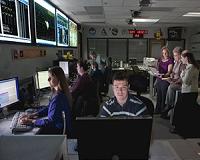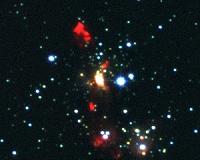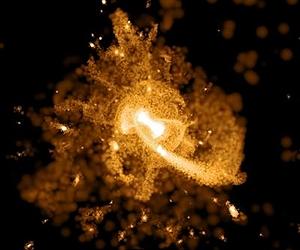|
 Hayabusa Contains A Hint Of Dust
Hayabusa Contains A Hint Of DustMoffett Field CA (SPX) Jul 08, 2010 The sample return canister from the Hayabusa spacecraft has been opened, and does contain a small amount of dust particles, according to the JAXA website. This is very encouraging news! However, it is not yet known if the dust is from the asteroid Itokawa, where Hayabusa briefly touched down, or if it could be from Earth - left in the container from before launch, or it possibly could have made its way in there during the landing, or during post-landing handling. "Material on the planet or a ... read more |
. |
|
|
Free Space, Earth, Energy And Military Newsletters - Delivered Daily |
| . | . |
 |
| .. |
RXTE Homes In On A Black Hole's Jets Greenbelt MD (SPX) Jul 02, 2010
Greenbelt MD (SPX) Jul 02, 2010For decades, X-ray astronomers have studied the complex behavior of binary systems pairing a normal star with a black hole. In these systems, gas from the normal star streams toward the black hole and forms a disk around it. Friction within the disk heats the gas to millions of degrees - hot enough to produce X-rays. At the disk's inner edge, near the black hole, strong magnetic fields eje ... more CID-42: A Black Hole 'Slingshot'  Washington DC (SPX) Jul 02, 2010
Washington DC (SPX) Jul 02, 2010Evidence for a recoiling black hole has been found using data from the Chandra X-ray Observatory, XMM-Newton, the Hubble Space Telescope (HST), and several ground-based telescopes. This black hole kickback was caused either by a slingshot effect produced in a triple black hole system, or from the effects of gravitational waves produced after two supermassive black holes merged a few million year ... more NASA Retires TRACE Spacecraft After Highly Successful Mission  Washington DC (SPX) Jul 02, 2010
Washington DC (SPX) Jul 02, 2010NASA's Transition Region And Coronal Explorer, known as TRACE, conducted its final observations of the sun on June 21. Although launched on April Fools' Day, 1998, TRACE quickly proved its worth, observing - for the first time - an entire cycle of solar activity and imaging dynamic coronal phenomena. TRACE provided images at five times the magnification of those taken by the Extreme Ultrav ... more |
.. |
 Course Correction Keeps New Horizons On Path To Pluto  UKIRT Unveils The Mysteries Of Massive Star Formation  Instant online solar energy quotes Solar Energy Solutions from ABC Solar |
.. |
|
|
Free Space, Earth, Energy And Military Newsletters - Delivered Daily |
|
|
. |
 Galactic Archaeologists Find Origin Of Milky Way's Ancient Stars
Galactic Archaeologists Find Origin Of Milky Way's Ancient StarsDurham, UK (SPX) Jul 01, 2010 Many of the Milky Way's ancient stars are remnants of other smaller galaxies torn apart by violent galactic collisions around five billion years ago, according to researchers at Durham University. Scientists at Durham's Institute for Computational Cosmology and their collaborators at the Max Planck Institute for Astrophysics, in Germany, and Groningen University, in Holland, ran huge computer simulations to recreate the beginnings of our galaxy. The simulations revealed that the ancient star ... read more |
| The contents herein, unless otherwise known to be public domain, are Copyright 1995-2010 - SpaceDaily. AFP and UPI Wire Stories are copyright Agence France-Presse and United Press International. ESA Portal Reports are copyright European Space Agency. All NASA sourced material is public domain. Additional copyrights may apply in whole or part to other bona fide parties. Advertising does not imply endorsement, agreement or approval of any opinions, statements or information provided by SpaceDaily on any web page published or hosted by SpaceDaily. Privacy statement |
| Previous Issues | Jul 07 | Jul 06 | Jul 05 | Jul 02 | Jul 01 |